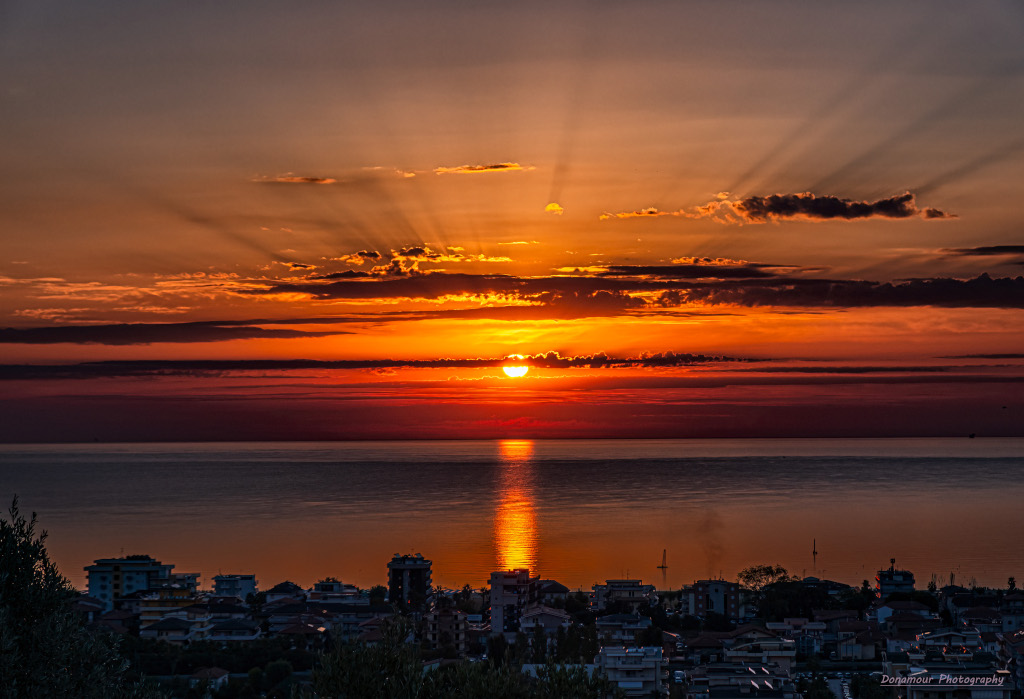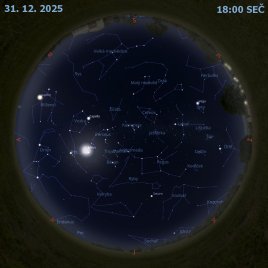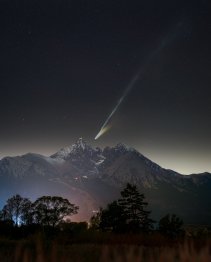Stíny zářijového východu Slunce

Uznání a copyright: Donato Lioce
Astronomicky důležitým okamžikem letošní zářijové rovnodennosti byl pátek 23. září 2022 1:03 UTC, kdy Slunce na své každoroční pouti pozemskou oblohou překročilo nebeský rovník na jih. Tím začal na severní polokouli naší milé planety podzim a na jižní polokouli jaro, kdy se den a noc na celé zeměkouli téměř sobě rovnají. Pokud slavíte astronomickou změnu ročních období pozorováním východu Slunce, tak se můžete podívat po krepuskulárních paprscích. Stíny vrhané mraky mohou mít na soumračné obloze dramatický vzhled při každém východu nebo západu Slunce. Díky perspektivě se rovnoběžné stíny zdají sbíhat v místě vycházejícího Slunce, které je při rovnodennosti na obzoru na východě. Krajina se Sluncem vycházejícím nad mořem, s oblohou s krepuskulárními paprsky a zrcadlením ve vodě byla zachycena 15. září z pobřeží Středozemního moře u italské vesnice Petacciato.
Seznam odkazů v popisu
- EarthSky.org: 2022 September equinox: All you need to know
- APOD: 2022-09-18 Rovnodennost: Analema nad Callanish Stones
- TimeAndDate.com: When Is the First Day of Fall 2022?
- NASA: September Equinox Marks the Start of Fall 2022
- AtOptics.co.uk: Sunrays - Crepuscular rays
- APOD: 2016-09-22 Východ Slunce nad Edmontonhenge
- Scienceabc.com: Why Does The Sun Reflect Off Seas And Oceans?
NASA Official: Phillip Newman Specific rights apply. NASA Web Privacy Policy and Important Notices
A service of: ASD at NASA / GSFC & Michigan Tech. U.
Odkaz na originální APOD


